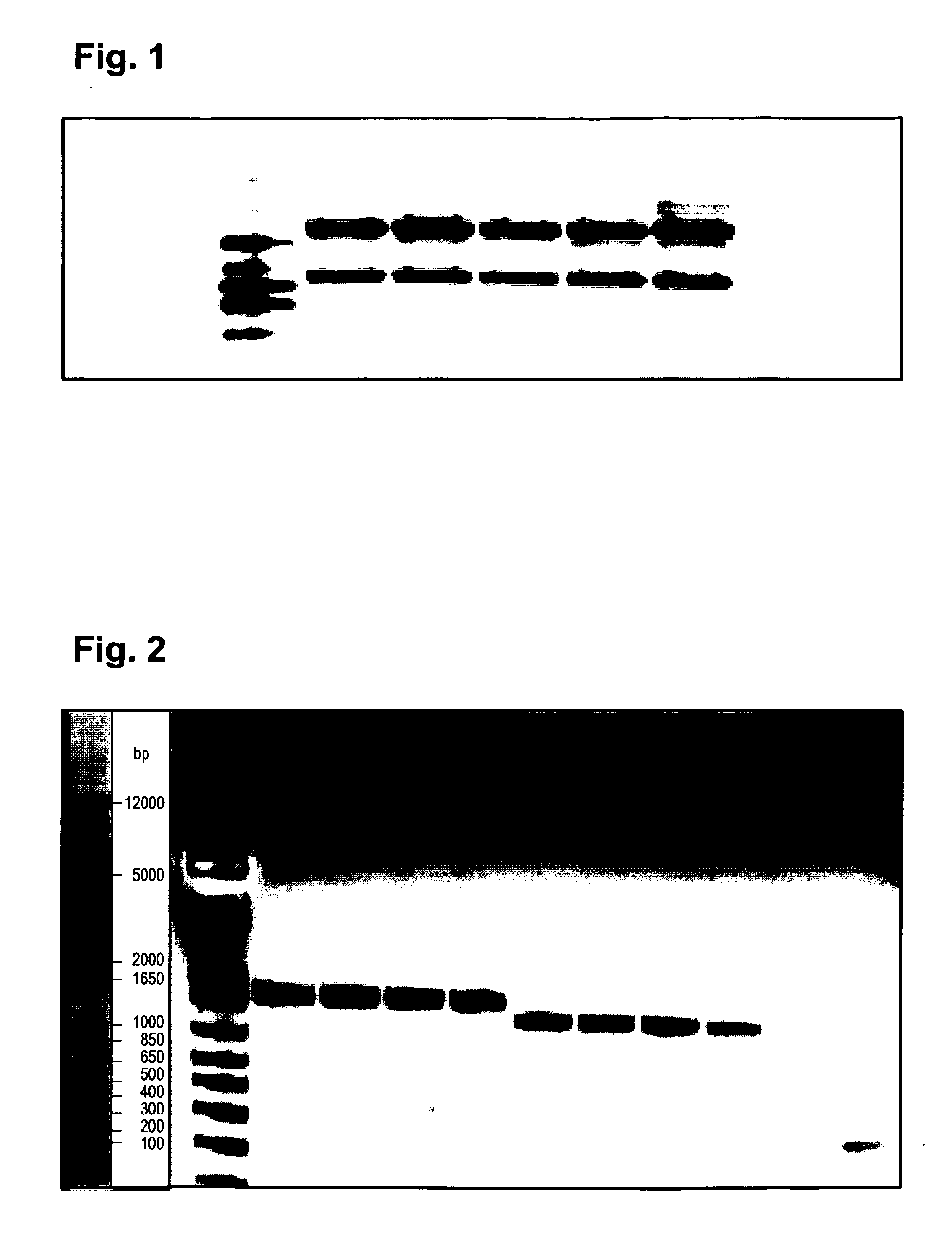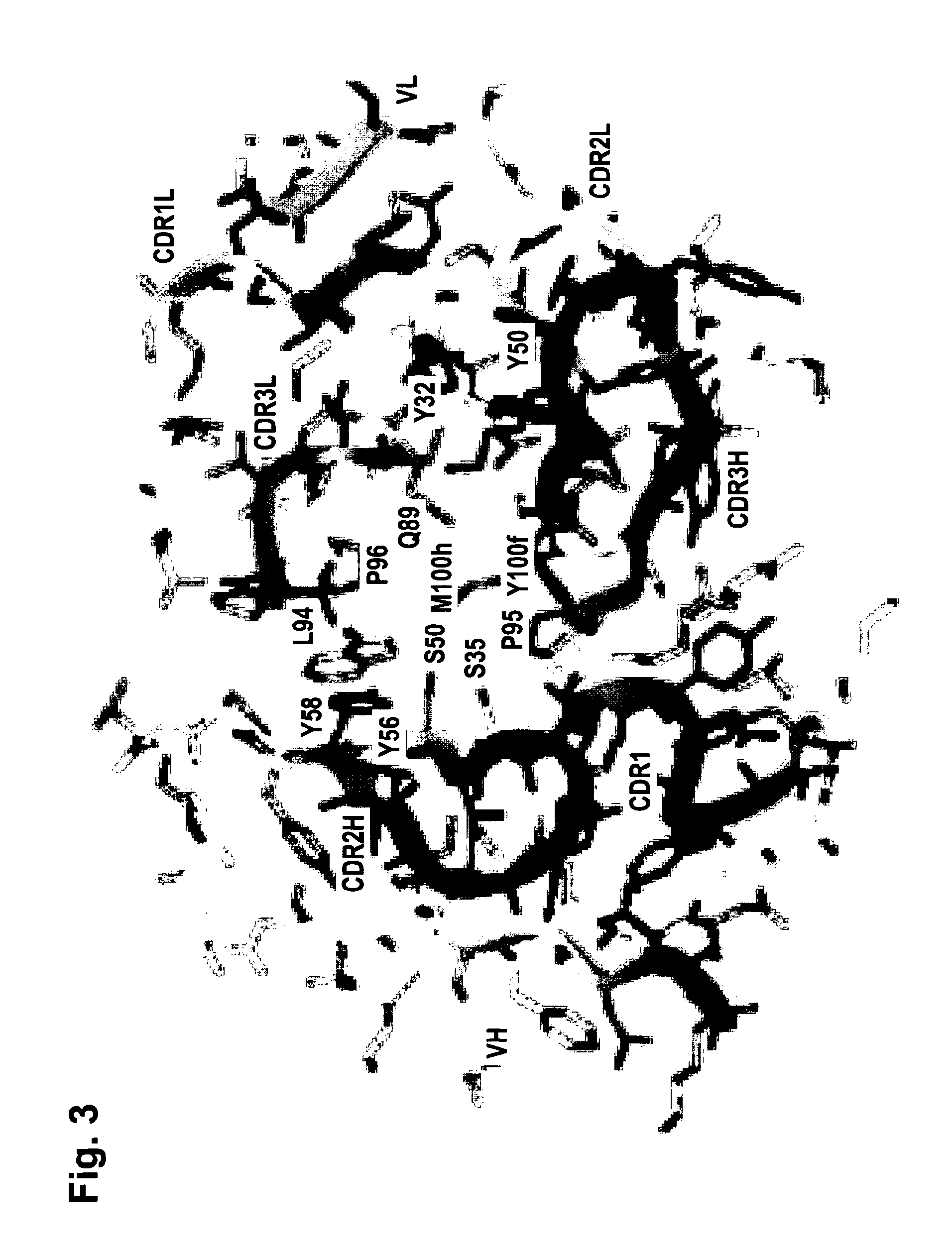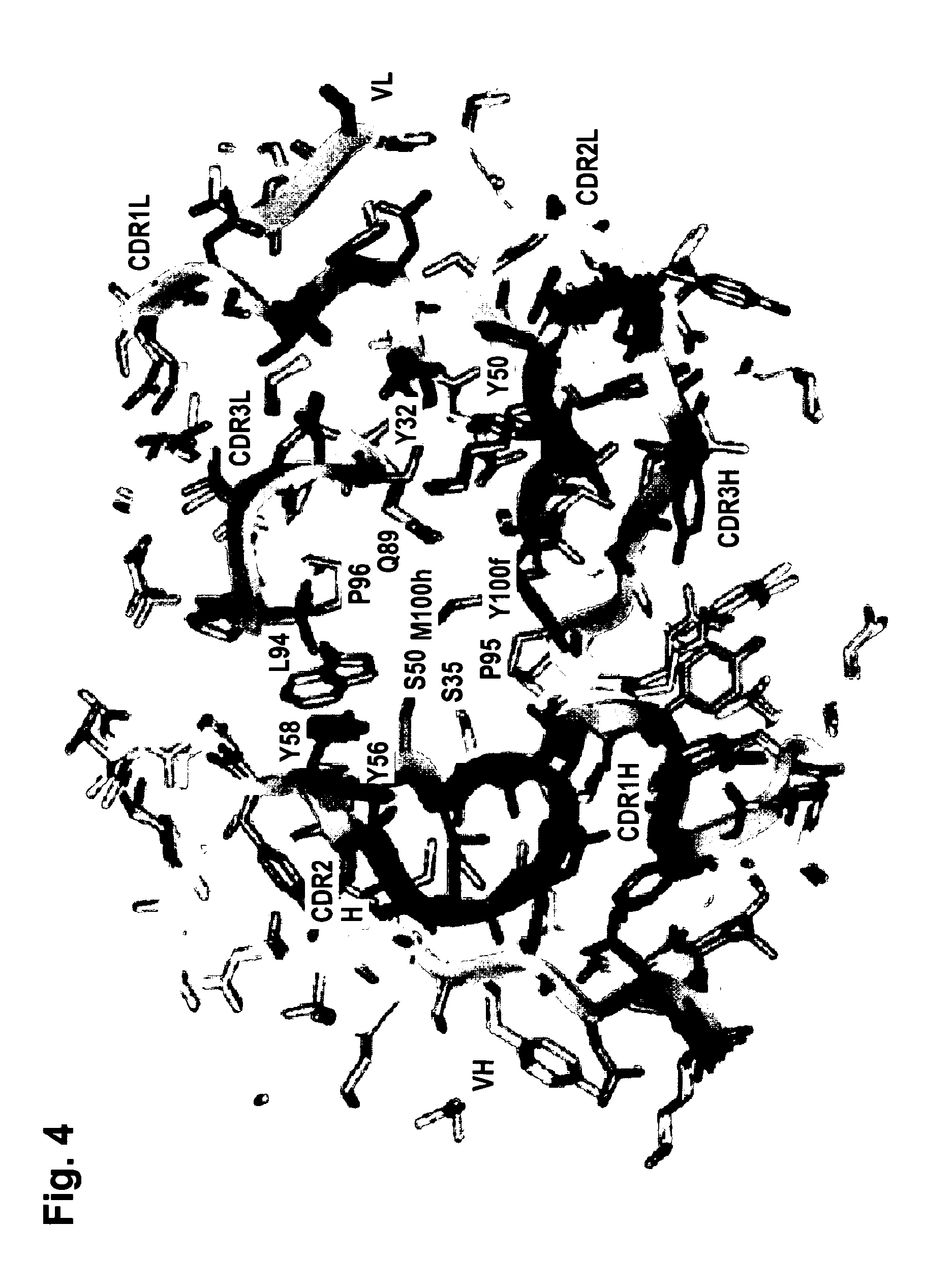Complex of bi-specific antibody and digoxigenin conjugated to a therapeutic or diagnostic agent
- Summary
- Abstract
- Description
- Claims
- Application Information
AI Technical Summary
Benefits of technology
Problems solved by technology
Method used
Image
Examples
example 1
Isolation and Characterization of cDNAs Encoding the VH and VL Domains of a Murine IgG1 Kappa from Mouse Hybridoma Clone 19-11
[0238]A prerequisite for the design, generation, optimization and characterization of recombinant antibodies, antibody fragments and -fusion proteins is the availability of protein and (DNA) sequence information. Therefore, this information had to be generated for he VH and VL domains of the ‘original’ murine antibody from the hybridoma clone 19-11. The experimental steps that needed to be performed subsequently were (i) the isolation of RNA from producing 19-11 hybridoma cells, (ii) conversion of this RNA into cDNA, then into VH and VL harboring PCR fragments, and (iii) integration of these PCR fragments into plasmids vectors for propagation in E. coli and determination of their DNA (and deduced protein) sequences.
[0239]RNA Preparation from 19-11 Hybridoma Cells:
[0240]RNA was prepared from 5×10e6 antibody expressing hybridoma cells (clone 19-11) applying...
example 2
Humanization of the VH and VL Domains of mu 19-11
[0245]The objective of humanization of antibody sequences is to generate molecules hat retain full functionality of the original antibodies of murine origin, but that harbor no (or only very few or non-relevant) sequences or structures that are recognized as ‘foreign’ by the human immune system. Different procedures are available and have been published that can address this challenge (Almagro J C, Fransson J Humanization of antibodies. Frontiers in bioscience: a journal and virtual library; 2008 Jan. 1; 13:1619-33, Hwang W Y, Foote J Immunogenicity of engineered antibodies. Methods (San Diego, Calif.); 2005 May; 36(1):3-10).
[0246]The functionality of variable regions of antibodies is determined by secondary and tertiary (and quaternary) structures, whose formation however base on the primary sequence of VH and VL (and of adjacent and interacting entities). Because of that, the major challenge of humanization is to (fully) retain stru...
example 3
Composition, Expression and Purification of Recombinant Humanized Antibodies, -Fragments and Bispecific-Fusion Proteins
[0263]For more detailed characterization, murine and humanized modules were combined with constant regions of human antibodies, either to form humanized IgG's or to generate bispecific fusion proteins with other antibody sequences. The generation of humanized IgGs, and bispecific derivatives that bind Dig as well as other targets (e.g. receptor tyrosine kinases Her2 or IGF1R) required (i) design and definition of amino- and nucleotide sequences for such molecules, (ii) expression of these molecules in transfected cultured mammalian cells, and (iii) purification of these molecules from the supernatants of transfected cells.
[0264]Design and Definition of Amino- and Nucleotide Sequences of IgG and Bispecific Antibody Derivatives that Bind Digoxygenin as Well as Her2 or IGF1R
[0265]To generate a humanized IgG that harbors the binding specificity of the (original) mur...
PUM
| Property | Measurement | Unit |
|---|---|---|
| Volume | aaaaa | aaaaa |
| Volume | aaaaa | aaaaa |
| Volume | aaaaa | aaaaa |
Abstract
Description
Claims
Application Information
 Login to View More
Login to View More - R&D
- Intellectual Property
- Life Sciences
- Materials
- Tech Scout
- Unparalleled Data Quality
- Higher Quality Content
- 60% Fewer Hallucinations
Browse by: Latest US Patents, China's latest patents, Technical Efficacy Thesaurus, Application Domain, Technology Topic, Popular Technical Reports.
© 2025 PatSnap. All rights reserved.Legal|Privacy policy|Modern Slavery Act Transparency Statement|Sitemap|About US| Contact US: help@patsnap.com



